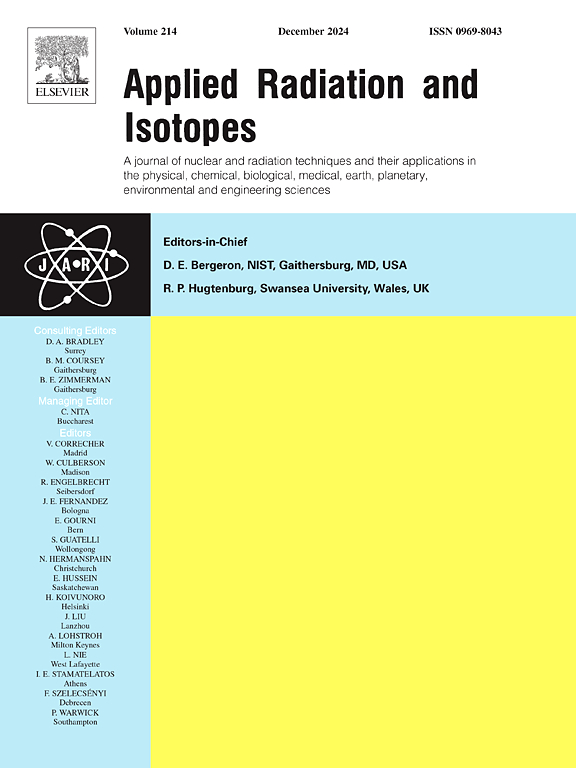A new background discrimination method using support vector machine (SVM) with gaussian kernel in low-level 3H liquid scintillation measurement
IF 1.6
3区 工程技术
Q3 CHEMISTRY, INORGANIC & NUCLEAR
引用次数: 0
Abstract
In this study, a new background discrimination method using SVM with gaussian kernel in low-level 3H liquid scintillation measurement is developed. Dimensionality reduction techniques were employed to process the full waveform data of each event following time discrimination. The reduced-dimensional data were then used to construct the classification model. To ensure a fair comparison with traditional method, the advantages of offline processing were employed to systematically traverse all possible parameter configurations within reasonable ranges, enabling the determination of the optimal parameters. In machine learning-based background event discrimination, the high-quality labeled datasets are obtained through long-term measurements of blank samples and short-term measurements of medium-activity 3H samples. Additionally, a series of low-activity 3H samples with activity levels of approximately 1 Bq, 3 Bq, and 5 Bq were prepared through quantitative dilution. The results demonstrate that the proposed method achieves a significant improvement in discrimination capability compared to traditional method. It effectively minimizes background levels across the entire energy range while preserving detection efficiency, significantly enhancing the measurement capability for low-activity 3H samples.
提出了一种基于高斯核支持向量机的低h液体闪烁背景识别方法
本文提出了一种基于高斯核支持向量机的低浓度3H液体闪烁背景识别方法。采用降维技术对每个事件的全波形数据进行时间判别处理。然后使用降维数据构建分类模型。为了保证与传统方法的公平比较,利用离线处理的优势,在合理范围内系统遍历所有可能的参数配置,从而确定最优参数。在基于机器学习的背景事件判别中,通过对空白样本的长期测量和对中等活度的3H样本的短期测量获得高质量的标记数据集。此外,通过定量稀释制备了一系列活性水平约为1 Bq, 3 Bq和5 Bq的低活性3H样品。结果表明,与传统方法相比,该方法的识别能力有了显著提高。它有效地最小化了整个能量范围内的背景电平,同时保持了检测效率,显著提高了对低活性3H样品的测量能力。
本文章由计算机程序翻译,如有差异,请以英文原文为准。
求助全文
约1分钟内获得全文
求助全文
来源期刊

Applied Radiation and Isotopes
工程技术-核科学技术
CiteScore
3.00
自引率
12.50%
发文量
406
审稿时长
13.5 months
期刊介绍:
Applied Radiation and Isotopes provides a high quality medium for the publication of substantial, original and scientific and technological papers on the development and peaceful application of nuclear, radiation and radionuclide techniques in chemistry, physics, biochemistry, biology, medicine, security, engineering and in the earth, planetary and environmental sciences, all including dosimetry. Nuclear techniques are defined in the broadest sense and both experimental and theoretical papers are welcome. They include the development and use of α- and β-particles, X-rays and γ-rays, neutrons and other nuclear particles and radiations from all sources, including radionuclides, synchrotron sources, cyclotrons and reactors and from the natural environment.
The journal aims to publish papers with significance to an international audience, containing substantial novelty and scientific impact. The Editors reserve the rights to reject, with or without external review, papers that do not meet these criteria.
Papers dealing with radiation processing, i.e., where radiation is used to bring about a biological, chemical or physical change in a material, should be directed to our sister journal Radiation Physics and Chemistry.
 求助内容:
求助内容: 应助结果提醒方式:
应助结果提醒方式:


